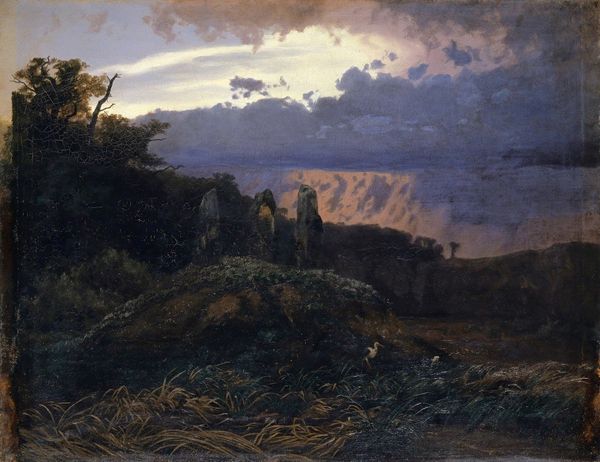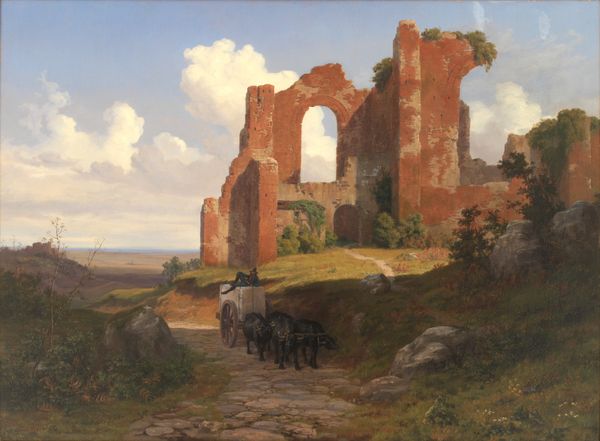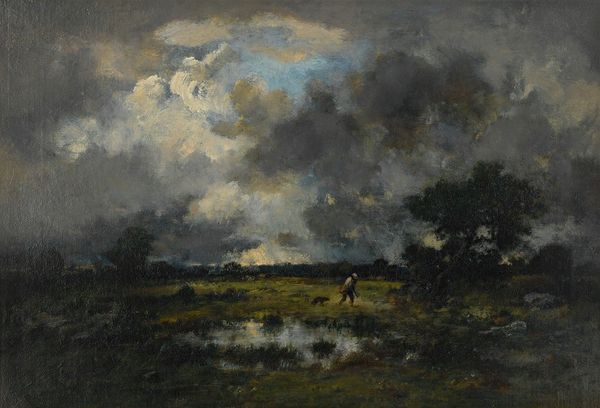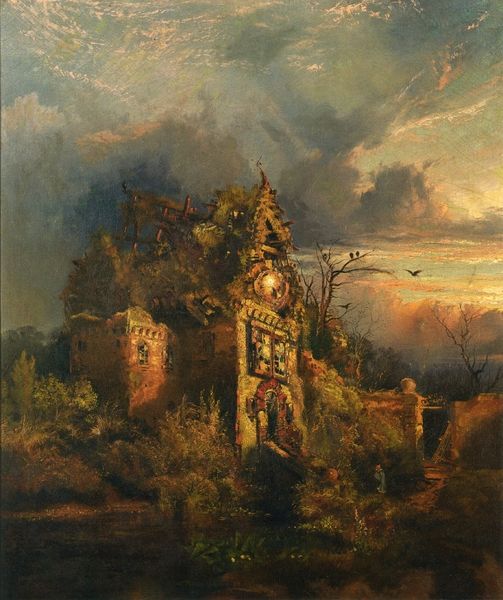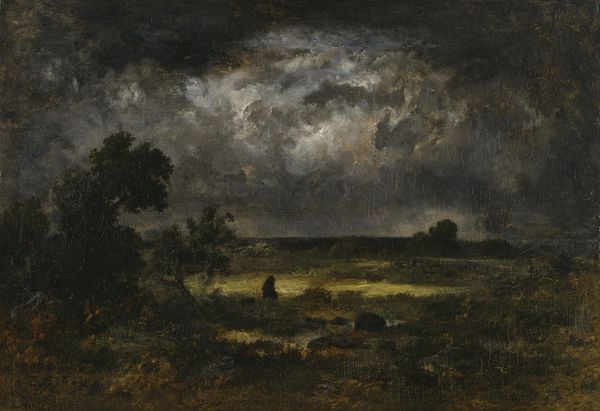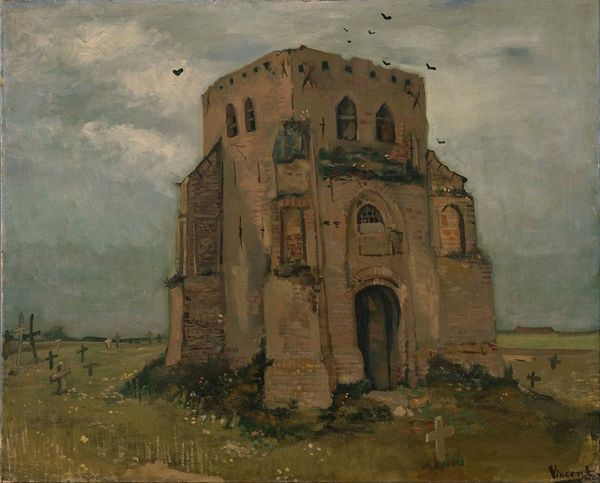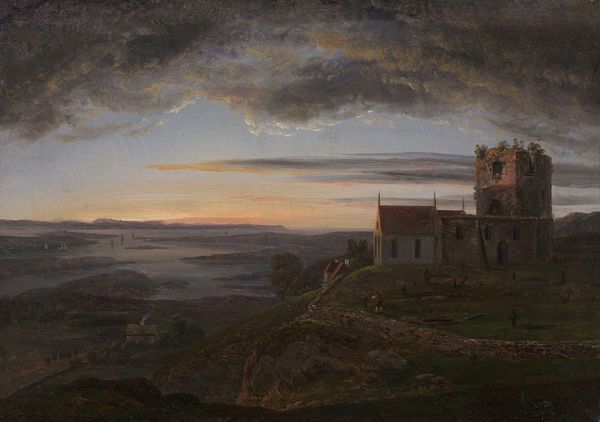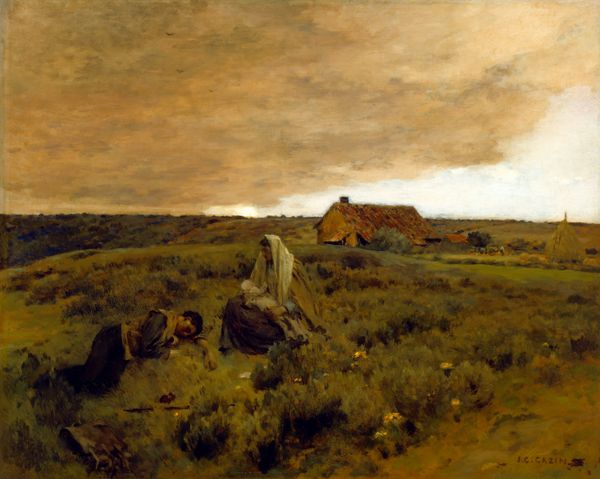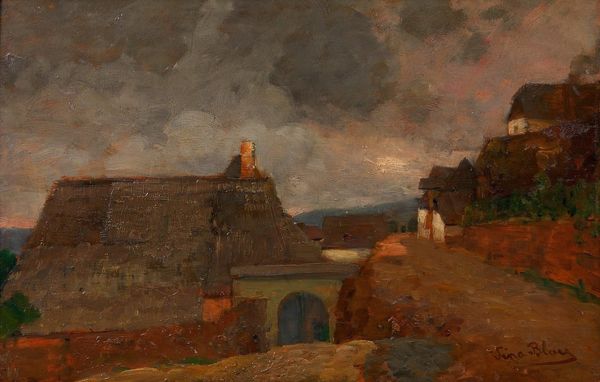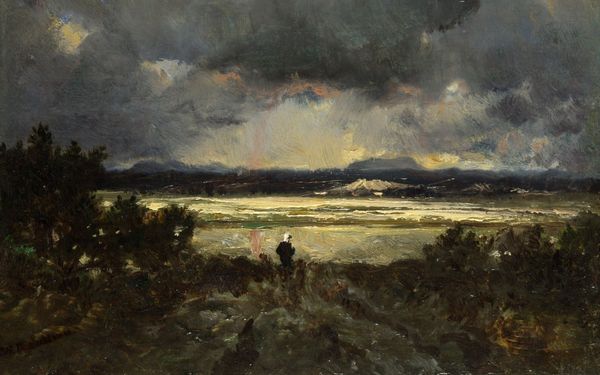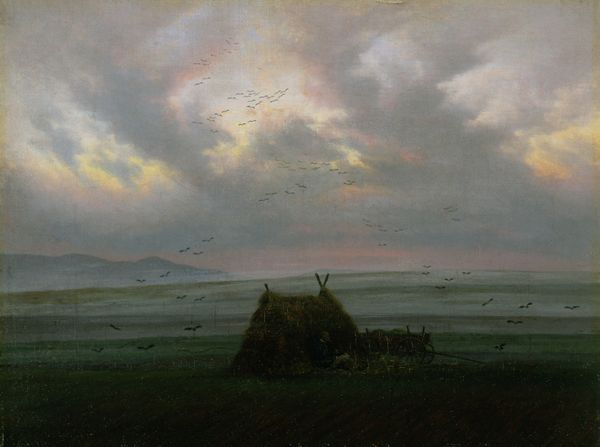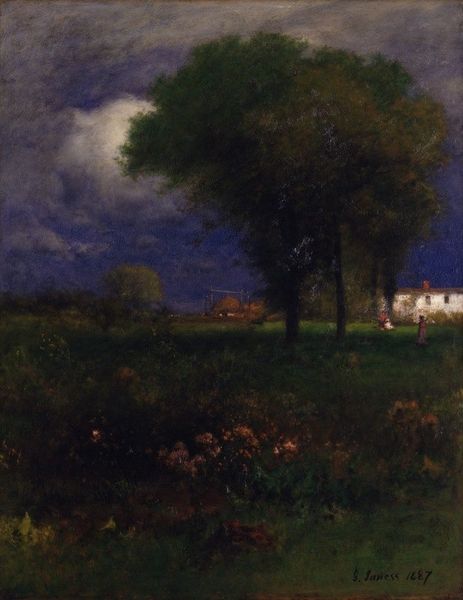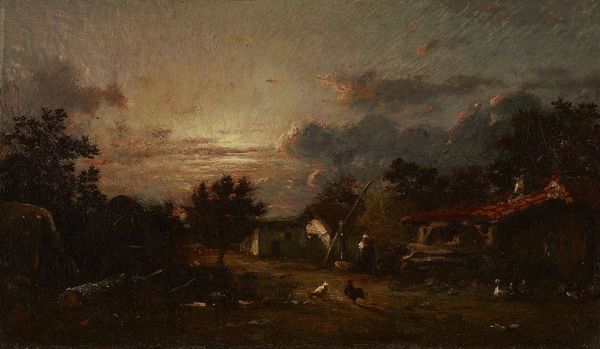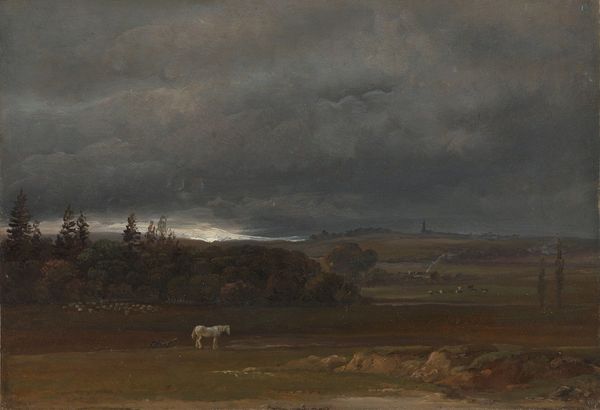
oil-paint
#
oil-paint
#
landscape
#
romanticism
Copyright: Public Domain: Artvee
Editor: So, here we have Arnold Böcklin's "Moonlit Landscape with Ruins," an oil painting from 1849. I’m struck by the palpable darkness and the contrasting glimmer of the ruined building under the moonlight. How can we begin to interpret this atmospheric landscape? Curator: Let's think about what Böcklin is doing here with materials and process. He’s not simply representing a scene; he's constructing a mood through careful application of oil paint. Note the texture, the visible brushstrokes that give life to the ruins and the turbulent sky. How do these choices speak to Romanticism's engagement with emotional labor and material creation? Editor: I see what you mean about the brushstrokes, it gives it almost a…raw feeling. Is he perhaps reflecting on the materials used to build this, like who was building, and who lived there? Curator: Precisely. Consider the ruin itself. It represents a breakdown of material and societal structures, a site where nature reclaims human endeavor. Romanticism often grappled with the impacts of industrialisation and how nature’s influence diminishes. Is the equestrian, framed between building and forest, perhaps emblematic of this shifting order of production? Is that labour’s influence? Editor: That makes so much sense. The lonely rider then underscores this whole thing. Maybe nature reclaims our human work at some point. Curator: Exactly. Böcklin’s strategic choice of material—oil paint—elevates this to ‘high art,’ yet the scene hints at an underlying narrative tied to labour and a cycle of creating and undoing, consumption. I learned a bit more, considering context in new light. Editor: Right! The conversation highlights the socio-political dimension of art through its materiality. That was insightful.
Comments
No comments
Be the first to comment and join the conversation on the ultimate creative platform.
